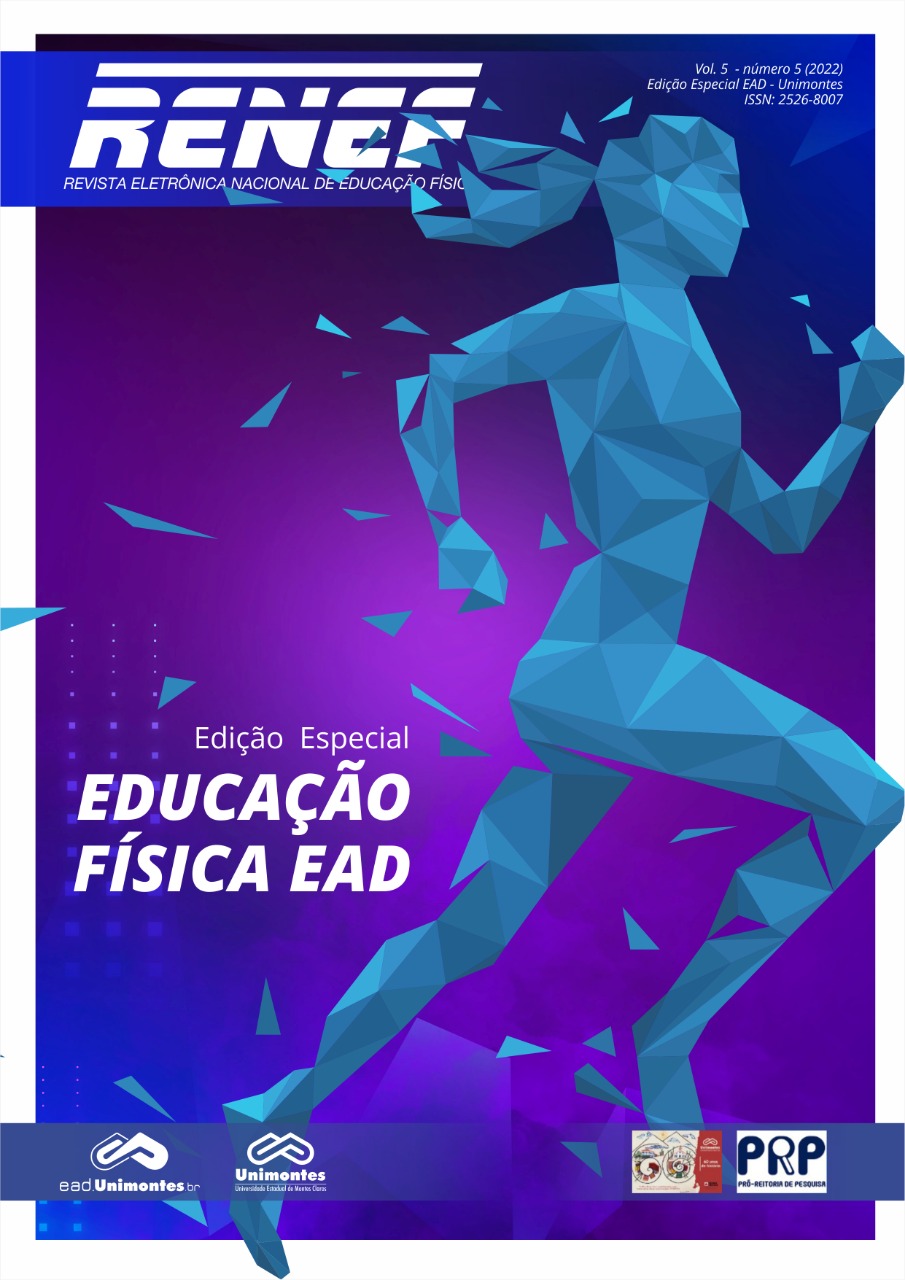LESÕES NA PRÁTICA DO FUTEBOL AMADOR
Abstract
Football is undoubtedly the best known and most practiced sport in Brazil, and for many
the best known in the world. We know that football is a sport of great physical contact,
this leads the football player to present a high rate of injuries. This sport presents as the
most affected by injuries. Therefore, studies on this topic are necessary, both for the
development of prevention methods and for rehabilitation. The objective of this project
was to identify the main injuries suffered by amateur soccer players. The methodology
used was carried out through a literature review of articles and books that address the
theme. A survey was also carried out with people who practice this modality, through a
form. The results found regarding the prevalence of injuries were: Strains and bruises
were the most frequent types of injuries among the participants. With the completion of
the project, the need for further studies on the subject is perceived. It is noted that
prevention becomes an efficient instrument in reducing and in the number of new injuries.
Regarding the frequency of injuries compared to the position of the athlete, the striker
position was the most affected by injuries. Even if they cannot be completely prevented,
due to the different mechanisms that generate them, knowledge about injuries, the
athlete's profile and the mechanisms, is characterized as an excellent preventive tool.
Downloads
References
ALMEIDA, José. Estudo de revisão acerca da prevenção de lesões musculares nos isquiotibiais. 2009. 89f. Dissertação de Licenciatura (Graduação) – Faculdade de Ciências do Desporto e de Educação Física da Universidade de Porto, Porto, 2009.
AZEVEDO, D. C.; SAMULSKI, D.M. Assessment of psycological pain management techniques: a comparative study between athletes and non-athletes. Revista Brasileira do Esporte, v. 9, n. 4, 2003, p. 214-222.
CARVALHO et al. Posição oficial da Sociedade Brasileira de Medicina do Esporte: atividade física e saúde. Revista Brasileira de Medicina do Esporte v. 2, n 4 – Out/Dez, 1996 p 79-80.
DA MATTA, WILSON et al. O universo do futebol: esporte sociedade Brasileira. Rio de Janeiro 1992, p. 21.
DUMAZEDIER, J. Lazer e cultura popular. 3ª edi, Tradução de Maria de Lourdes Santos Machado. São Paulo: Perspectiva, 2004.
FALEIROS, MARIA IZABEL. Repensando o lazer. Perspectivas, São Paulo, v.3, 1980, p. 51-65.
FERNANDES, J. L. Futebol. Ciência, Arte ou Sorte. São Paulo: Pedagógica e Universitária, 1994, p5. Disponível em: http://www.praticahospitalar.com.br/pratica%2038/paginas/materia%2015 -38.htm. Acesso em: 25/11/2009.
GOMES, C.L. Lazer urbano, contemporaneidade e educação das sensibilidades. Periódico Itinerário, v. 1, 2008, p. 1-18.
RINALDI, WILSON – Futebol: Manifestação Cultural e Ideologia, Maringá, v 11, n.1. 2000, p. 167-172.
SALLES. J.G.C. Futebol: Um lazer mágico da cultura brasileira. Motus Corporis, v. 5, n. 1, 1998, p. 53.
SILVA, A. A. Estudo epidemiológico das lesões no futebol profissional e propostas de medidas preventivas. In: I Premio INDESP de literatura desportiva. v 2.Brasília, 1999, p.25 -30.


















